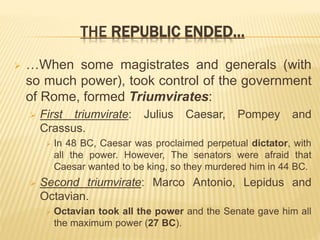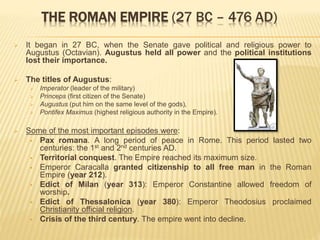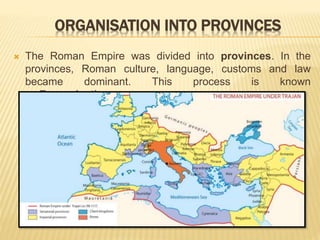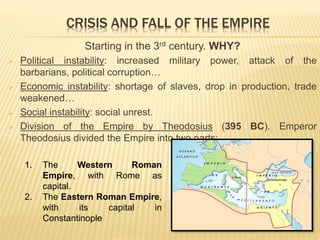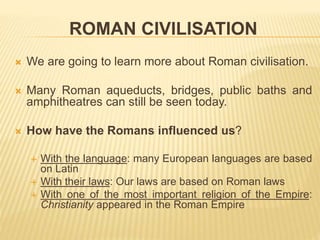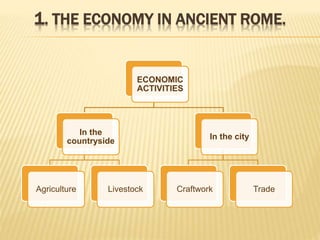Rome was founded in 753 BC by Romulus and Remus on the banks of the Tiber River. According to legend, the twins were abandoned and raised by a she-wolf. Romulus later killed Remus and became Rome's first king. Rome transitioned from a monarchy to a republic with elected magistrates and grew powerful through military conquests. It eventually became an empire under Augustus in 27 BC, spanning the Mediterranean world. The Roman Empire fell in 476 AD as the western half declined due to military and economic issues while the eastern half continued as the Byzantine Empire.









